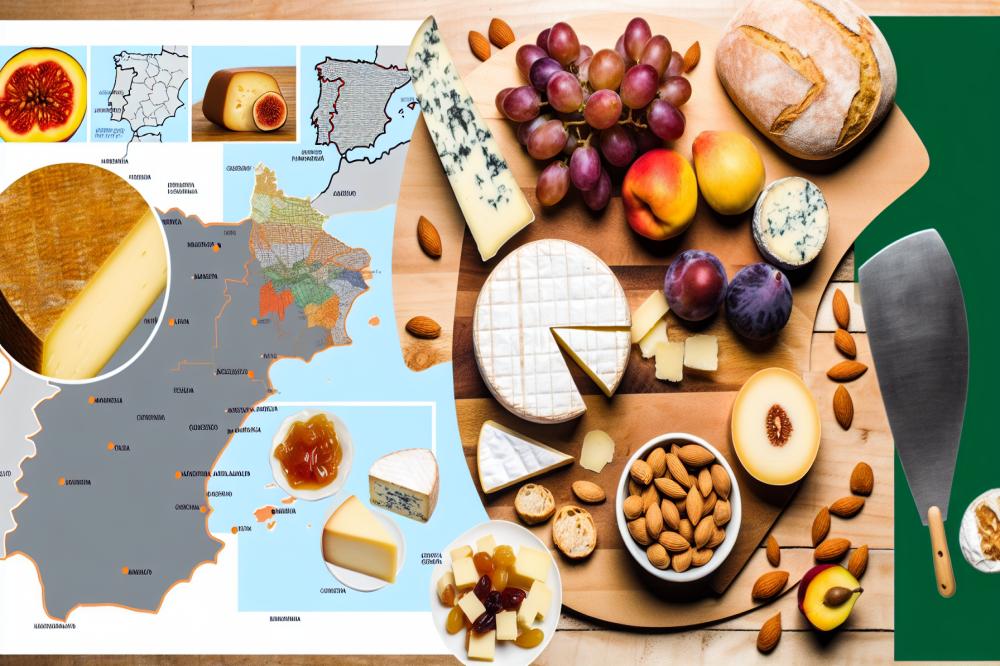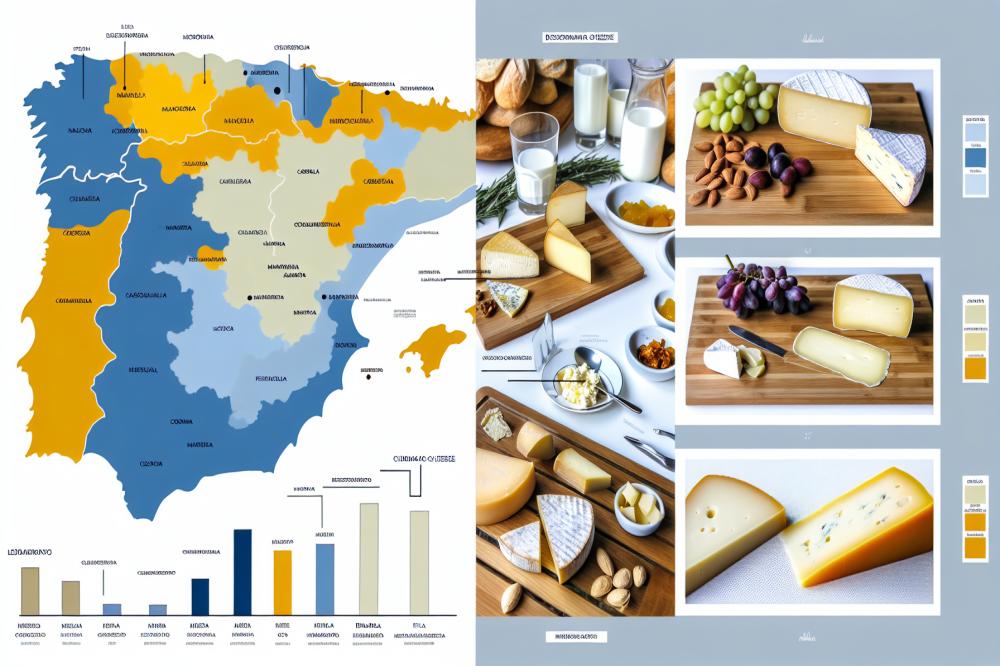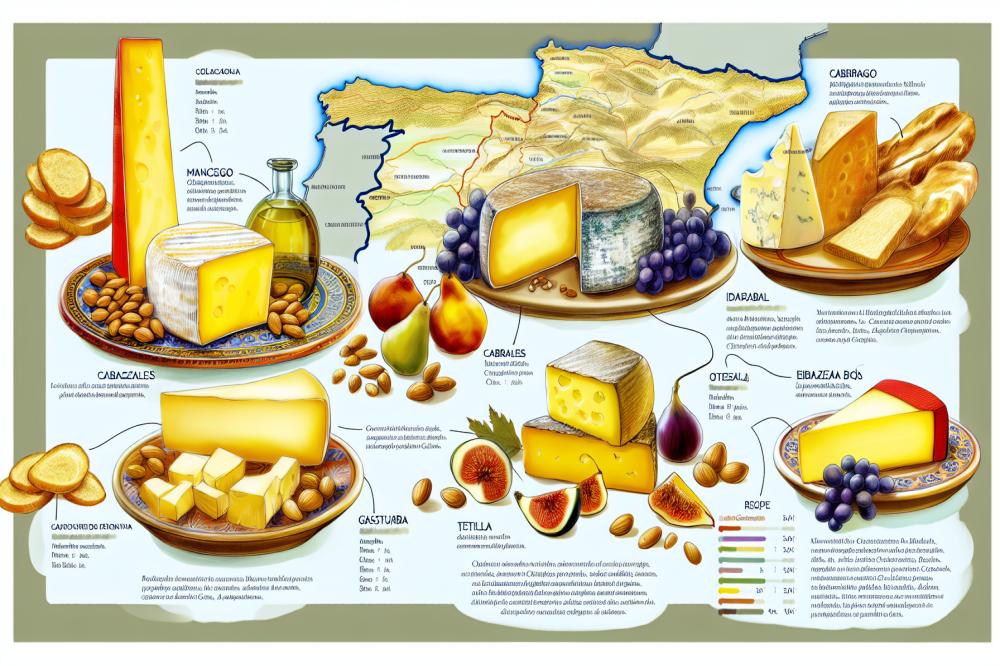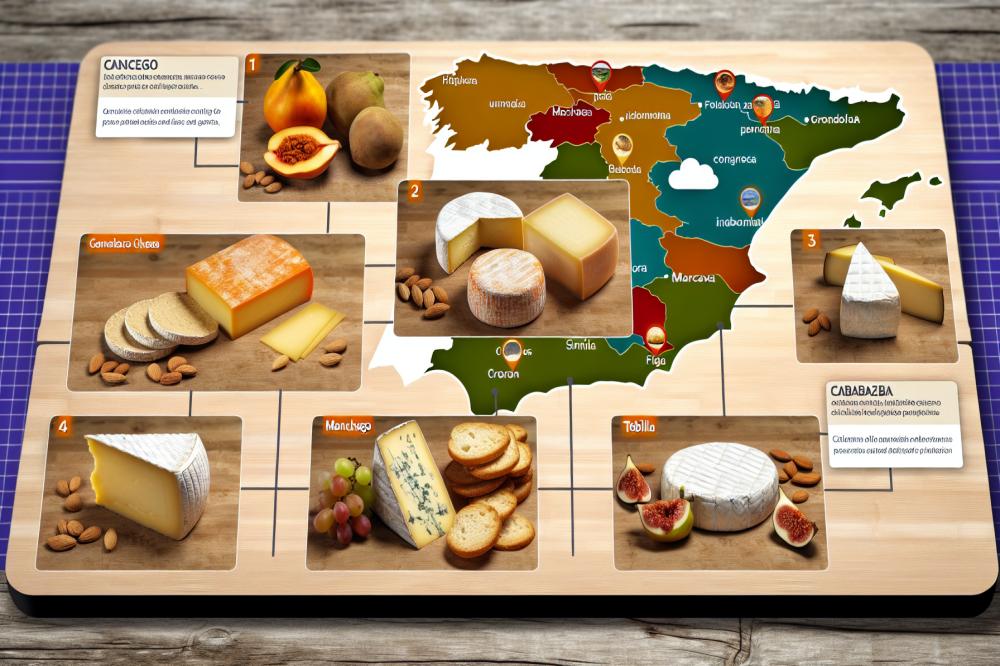Spanish cheeses and Their Regional Roots
Spanish cheeses hold a cherished place in the culinary landscape of Spain. These delectable creations reflect the rich heritage and traditions of different regions. Spain’s diverse geography contributes to a wide array of flavors and textures. Each area has its own distinctive cheese, often linked to local practices and history.
From the lush pastures of the north to the arid landscapes of the south, climate influence plays a vital role in shaping these dairy delights. The weather affects everything from the grass cows eat to the production methods used by artisans. For instance, in the cooler, rainier regions, cheeses tend to be creamier and richer. Meanwhile, in hotter areas, the cheeses often have firmer textures and sharper tastes.
Artisan cheesemakers pride themselves on using local ingredients. Many craft their products based on traditional recipes passed down through generations. This connection to the land enhances the authenticity of the cheese. It’s more than food; it’s a taste of culture and community. As we explore the cheeses of Spain, we will discover how each region’s climate, along with its dairy farming practices, shapes these extraordinary products.
Spanish Cheeses

Spain is known for its rich cheese heritage. Many types of cheese stand out across varied landscapes. Each region has its own production methods that reflect local traditions.
Manchego
Manchego hails from the La Mancha region. This cheese is made from the milk of Manchega sheep. It boasts a firm texture and a distinct flavor that ranges from nutty to slightly tangy. The aging process enhances its taste, leading to a deeper, more complex profile. Its iconic basket-weave rind adds to its character.
Cabrales
In Asturias, Cabrales presents a bold option. Recognized as a blue cheese, it undergoes aging in natural caves. This step contributes to its strong, pungent aroma. The texture is creamy yet crumbly, which contrasts with its intense taste. The combination of cow, goat, and sheep milk creates layers of flavor, making it a favorite for adventurous palates.
Idiazabal
Originating from the Basque Country and Navarra, Idiazabal is made primarily from the milk of Latxa sheep. This cheese is typically smoked, which gives it a unique flavor profile. Its hard texture provides a satisfying bite. The taste reflects the region’s climate, with grassy and nutty notes shining through.
Tetilla
Tetilla comes from Galicia and is easily recognized by its distinctive shape, resembling a breast. This cheese features a soft, smooth texture that is both inviting and creamy. Bright, buttery flavors dominate, making it a crowd-pleaser. Traditional techniques, including hand-molding, play a critical role in creating its signature look and feel.
Traditional cheese-making methods in Spain are vital. They carry on age-old practices that have been refined over centuries. These methods not only preserve local flavors, but also highlight the influence of each region’s climate. Weather conditions are key, affecting milk quality and, consequently, the final product. Craftsmanship remains at the heart of Spain’s cheese industry.
climate influence

The diverse climates of Spain play a significant role in shaping its cheeses. Variations range from the humid regions in the north to the dry and arid areas down south. Each climate type impacts the milk produced, which in turn affects the characteristics of the end product.
Northern Spain experiences higher humidity and cooler temperatures. This environment helps create rich pastures. Animals, such as goats and cows, graze on lush grass, leading to milk that is creamy and flavorful. An example of cheese from this region is Idiazábal, a semi-hard cheese from the Basque Country. Its distinctive smoky flavor comes from traditional aging methods often influenced by the local climate.
In contrast, the southern regions are warmer and much drier. Here, the pastures differ. Animals often graze on tougher vegetation, which provides a different quality of milk. This difference in feed results in cheeses that can be sharp and strong in taste. Take, for instance, the famous Queso de Cabra, a goat cheese from Murcia. This cheese has a tangy flavor that reflects the unique characteristics of its climate.
The aging process for cheeses also varies with climatic conditions. In cooler areas, cheeses can mature slowly, developing complex flavors. On the other hand, in hotter regions, the ripening can accelerate, yielding tangier profiles. The cheese Manchego, produced in the La Mancha area, benefits from its warm, dry climate. Its aging process contributes to its nutty and slightly sweet flavor.
The impact of climate extends beyond just flavor. It also influences texture. Cheeses from humid climates often retain more moisture, giving them a softer mouthfeel. Meanwhile, drier conditions can lead to firmer cheeses. For example, the hard cheese Roncal from Navarre is typically aged in a dry atmosphere, resulting in a firmer texture that complements its robust taste.
This intricate relationship between climate and cheese production showcases the beauty of regional diversity in Spain. Each bite tells a story of weather patterns, animal diets, and local traditions. When sampling these cheeses, one truly experiences a mix of culture and nature that has been shaped over centuries.
Recipe: Cheese Board with Spanish Cheeses

Creating a delightful cheese board can be a fun way to explore the flavors of Spain. A selection of cheeses paired with various accompaniments makes for an enjoyable experience. Here’s how to put together a delicious spread featuring Manchego, Cabrales, and Idiazabal.
Ingredients
- 200g Manchego cheese
- 200g Cabrales cheese
- 200g Idiazabal cheese
- 150g Marcona almonds
- 100g quince paste
- Fresh fruits (grapes, figs)
- Bread or crackers
Instructions
Begin by arranging the chosen cheeses on a wooden cheese board. Slice the Manchego and Idiazabal into wedges or cubes. Crumble the Cabrales to add texture and flavor. Next, place clusters of Marcona almonds around the cheeses. Cut the quince paste into small pieces and arrange these pieces nearby for a sweet addition. Fresh fruits like grapes and figs add color and offer a delightful contrast. Finally, provide slices of bread or a selection of crackers on the side for perfect pairing.
Nutritional Information
Here is the nutritional breakdown per serving of this cheese board:
– Calories: 350
– Protein: 15g
– Fat: 25g
– Carbohydrates: 20g
Health Benefits
Moderate consumption of cheese brings several health benefits. It serves as an excellent source of calcium, which is vital for bone health. This spread offers good protein content as well, supporting muscle growth and repair. Vitamins found in cheese contribute to overall health and wellness. Balanced intake is key to enjoying these benefits without excess.
Final Thoughts

The relationship between climate and the diverse characteristics of cheeses in Spain is profound. Each region offers its special touch, influenced by temperature, humidity, and landscape. From the hot and dry areas of Andalusia to the cooler, damp climates of the Basque Country, the environment plays a crucial role in defining flavor and texture.
cheese varieties produced in Spain reflect this rich diversity. For example, a cheese made in the mountains may have a different taste compared to one crafted in a coastal village. Factors such as the local flora, animal breeds, and traditional production techniques interact with these environmental elements, shaping each cheese’s profile.
This cultural and climatic tapestry enriches the world of regional cheeses. Experience the sharpness of Manchego from La Mancha. Savor the creaminess of Cabrales from Asturias. Each bite tells a story, merging tradition with nature. Exploring these flavors offers a deeper appreciation for the artisans behind these creations.
Readers are encouraged to delve into these delicacies, discovering their unique qualities. Incorporating these cheeses into cooking or enjoying them on their own can elevate any meal. As you enjoy a slice of Spanish cheese, remember the intricate interplay of climate and culture that makes each one special.



